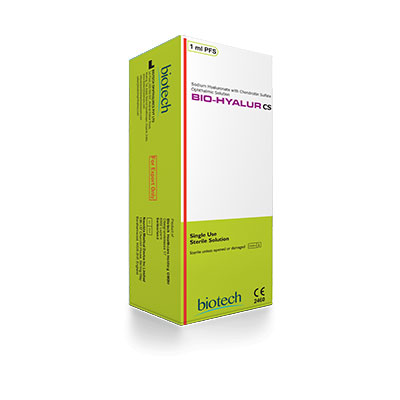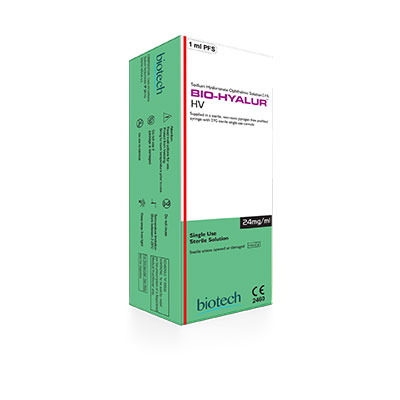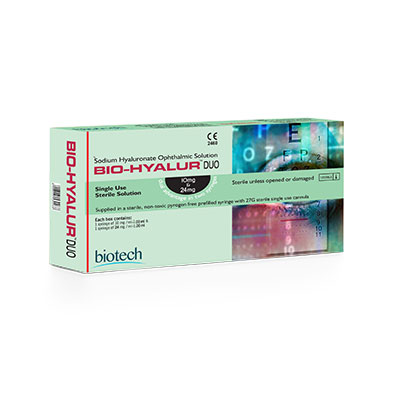OVDs
Quick Links
No products found in this company category.
What is The Ophthalmic Viscosurgical Devices?
Ophthalmic Viscosurgical Devices (OVDs) are specialized substances utilized in various eye surgeries, particularly in cataract surgery and intraocular lens (IOL) implantation. These substances, also known as viscoelastic materials, are formulated to exhibit specific properties that are critical for successful surgical outcomes. Derived from natural sources such as the umbilical cord or synthesized from materials like cotton and wood, OVDs embody high molecular weight polymers like sodium hyaluronate and chondroitin sulfate. Referred to as viscoelastic substances due to their combined viscous and elastic properties, they're aptly named for their role in maintaining surgical space and protecting the delicate corneal endothelium.
What is the function of the OVDS?
Ophthalmic Viscosurgical Devices (OVDs) fulfill various functions in eye surgery, notably during procedures like cataract surgery and intraocular lens (IOL) implantation. These functions include
- Maintaining space in the anterior chamber, protecting the corneal endothelium, and reducing intraocular pressure fluctuations.
- OVDs also aid in implementing specialized techniques such as the soft shell technique, where layers of OVDs are used to optimize surgical outcomes. This technique helps provide clarity, control surface tension, and ensure a clear surgical field.
- OVDs serve as essential tools in eye surgery, facilitating precision, safety, and optimal surgical outcomes.
Types of OVDS
Cohesive OVDs:
Cohesive OVDs are formulated using high molecular weight polymers like sodium hyaluronate and chondroitin sulfate. They exhibit cohesive properties, meaning they tend to stick together. These OVDs are crucial for maintaining space within the anterior chamber during eye surgeries, such as cataract surgery and IOL implantation. By forming a cohesive mass, they assist in stabilizing the surgical environment and facilitating precise surgical maneuvers.
Dispersive OVDs:
Dispersive OVDs, characterized by lower molecular weights, spread out more easily within the anterior chamber. Dispersive OVDs have a lower viscosity compared to cohesive ones. They are particularly effective in coating and protecting delicate eye tissues, such as the corneal endothelium, during surgical procedures Dispersive OVDs typically have longer chain lengths, which contribute to their adhesive properties. They help reduce surface tension in the anterior chamber, enhancing surgical precision and minimizing the risk of tissue damage during intraocular maneuvers.
Viscoadaptive OVDs:
Viscoadaptive OVDs combine the properties of both cohesive and dispersive OVDs. They adapt to the dynamic surgical environment, providing tailored support for tissue manipulation and space maintenance as needed during eye surgery. Viscoadaptive OVDs offer versatility and flexibility, allowing surgeons to adjust the viscosity and elasticity of the OVD to suit the requirements of different surgical procedures and patient needs.
Higher Viscosity Dispersive OVDs:
Higher viscosity dispersive OVDs represent a specialized category of OVDs with increased viscosity compared to traditional dispersive OVDs. Higher viscosity dispersive OVDs are particularly useful in managing challenging surgical situations. These OVDs offer enhanced tissue protection and space maintenance, especially in complex surgical scenarios such as cataract surgery with compromised anterior chamber stability. By providing greater stability and support, higher viscosity dispersive OVDs help minimize the risk of intraoperative complications and optimize surgical outcomes.
What are the Benefits of OVDS?
- Maintaining Space: OVDs ensure adequate space within the anterior chamber during eye surgeries such as cataract surgery and IOL implantation. This maintenance of space allows for better visualization of intraocular structures and facilitates precise surgical maneuvers.
- Protecting the Corneal Endothelium: The corneal endothelium is essential for maintaining corneal transparency and visual acuity. OVDs act as protective barriers, shielding the delicate corneal endothelium from mechanical trauma during surgical manipulation, thus reducing the risk of postoperative complications such as corneal edema and endothelial cell loss.
- Stabilizing Intraocular Pressure (IOP): Fluctuations in intraocular pressure (IOP) can occur during eye surgeries, potentially leading to complications such as corneal decompensation and glaucoma. OVDs help stabilize IOP by maintaining a consistent intraocular environment, minimizing the risk of such complications and promoting better visual outcomes for patients.
- Enhancing Surgical Precision: OVDs create a stable and controlled surgical environment, enhancing surgical precision and minimizing the risk of intraoperative complications. Surgeons can perform delicate maneuvers with confidence, knowing that the anterior chamber is adequately maintained and protected by the viscoelastic properties of OVDs.
What are the advantages of OVDS?
- Versatility: OVDs come in various formulations to suit different surgical requirements and patient needs. They can be tailored to specific surgical techniques and preferences, offering versatility in application across a wide range of ophthalmic procedures.
- Safety: When used appropriately by experienced surgeons, OVDs have a well-established safety profile, with minimal risk of adverse effects. This safety profile is attributed to the biocompatibility and inertness of the materials used in OVD formulations, ensuring compatibility with ocular tissues and minimizing the risk of allergic reactions or other adverse events.
- Improved Surgical Outcomes: By facilitating smoother surgical procedures and minimizing complications, OVDs contribute to improved surgical outcomes and patient satisfaction. Patients undergoing eye surgery with the assistance of OVDs often experience faster recovery times and better visual rehabilitation, leading to enhanced overall quality of life.
- Optimized Visual Rehabilitation: OVDs play a crucial role in optimizing visual outcomes for patients undergoing eye surgery, particularly cataract surgery and IOL implantation. By creating an optimal surgical environment and minimizing the risk of complications, OVDs help ensure that patients achieve the best possible visual acuity and quality of vision postoperatively.
What are the side effects of OVDS?
The use of Ophthalmic Viscosurgical Devices (OVDs) in eye surgery is generally considered safe, but they may be associated with certain side effects. Common side effects include transient increases in intraocular pressure (IOP) during and after surgery, which typically resolve spontaneously or with appropriate management. Temporary corneal edema or cloudiness may also occur, affecting visual acuity in the immediate postoperative period but usually resolving with time. Rare instances of allergic reactions to components like sodium hyaluronate may necessitate careful patient screening. Postoperative inflammation or discomfort may occur, although it is typically mild and self-limiting.
Are What OVDS Safe?
When used correctly by skilled surgeons, Ophthalmic Viscosurgical Devices (OVDs) are generally safe. They've been extensively studied and have few risks. However, like any medical intervention, they carry inherent risks and potential side effects that must be weighed against the benefits. It is imperative for surgeons to adhere to established protocols and guidelines for the selection, administration, and monitoring of OVDs during surgical procedures.
Categories
Company
Media
Follow Us
© Copyright Biotech /Terms Of Use - Privacy Policy
Version 2_CT_1212222





